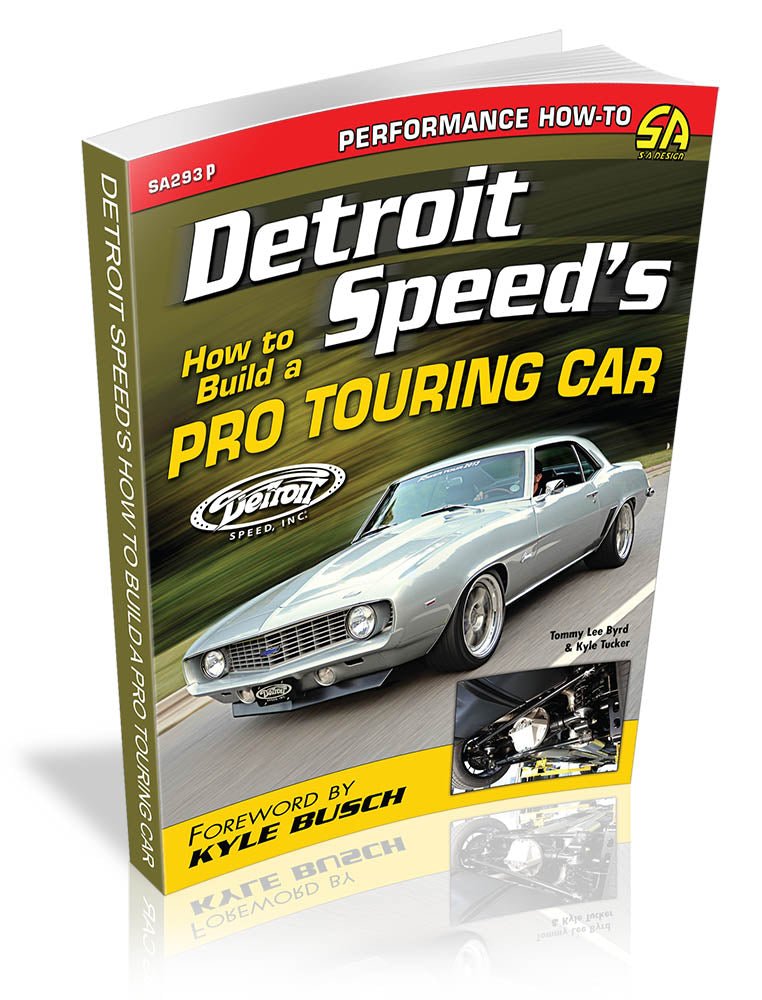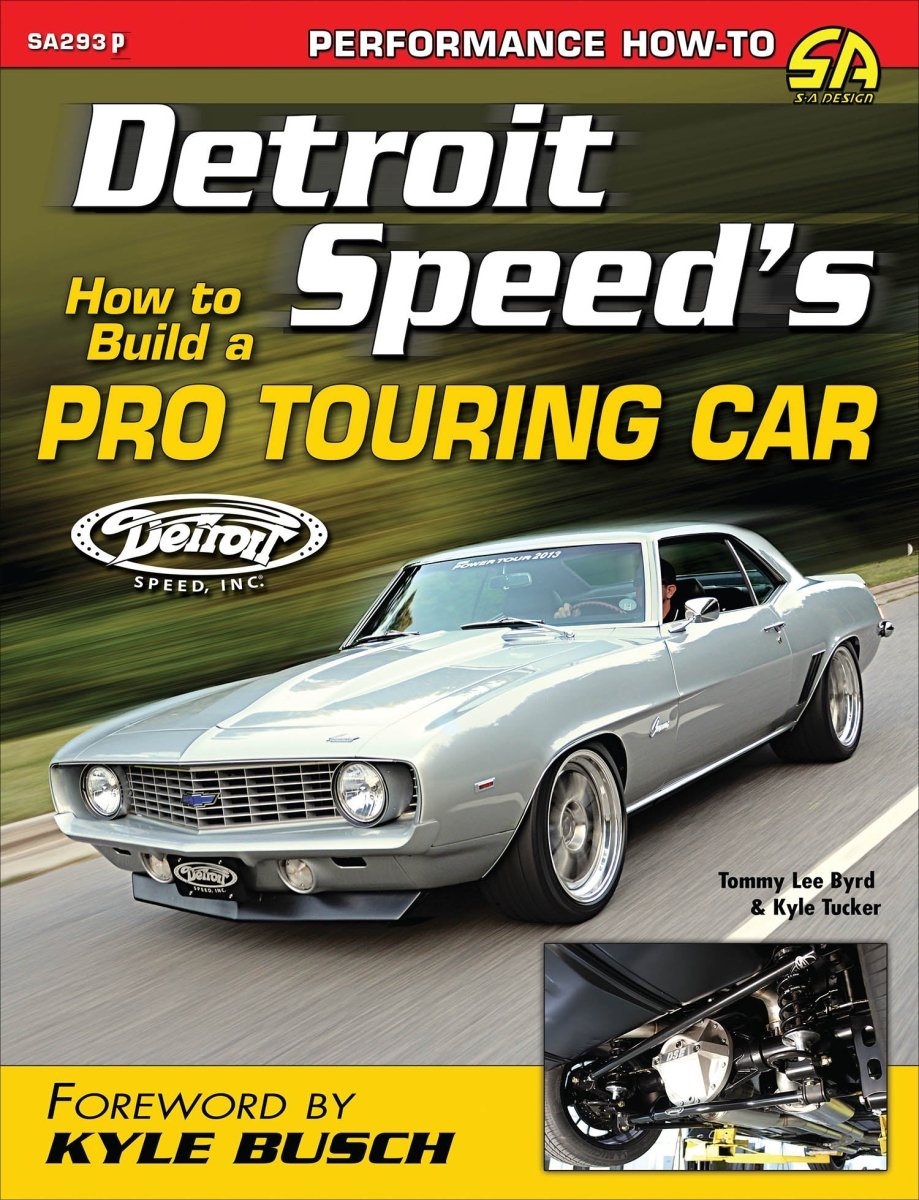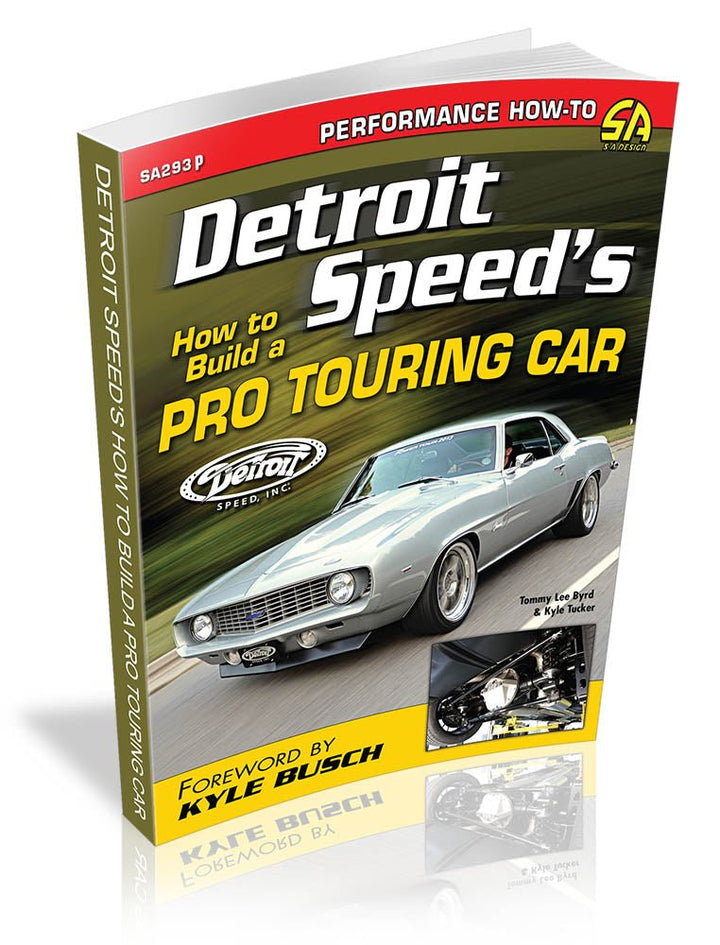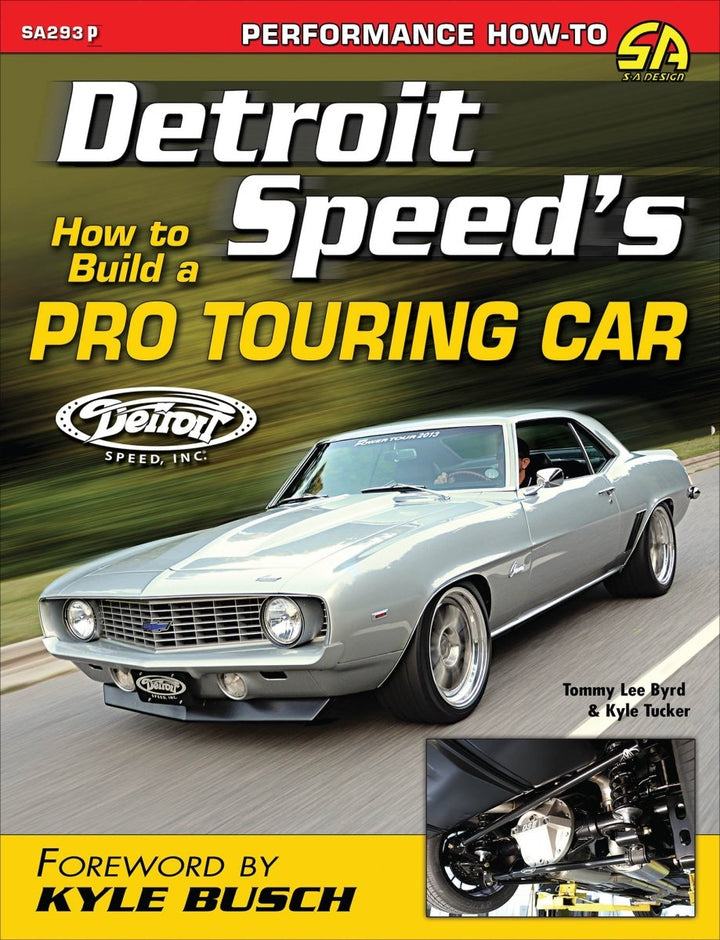The photos in this edition are black and white.
Trends in automotive modification come and go; some are outlandish, some are practical. Currently, the trend is Pro Touring. While it's expensive, it definitely leans toward the practical. It was originally a name used for GM cars, but "Pro Touring" has come to mean a style for all cars from many years. It is essentially the art of adding modern technology to aged designs to create cars that start, stop, drive, handle, and behave like modern performance cars. You can do this in many ways and choose from many suppliers.
Detroit Speed is at the forefront of the Pro Touring movement. The company is in a unique position to design and manufacture parts; they also build cars and test the parts for their effectiveness on the street and track. Kyle and Stacy Tucker have used their considerable engineering skill and marketing savvy to create a unique company that leads the Pro Touring movement.
You will discover the history of Detroit Speed and how they design performance parts. Learn-to-install sections cover front subframe and rear suspension assemblies as well as upgrades to wheel tubs, brakes, fuel system, driveline, cooling system, and more; also included is an LS swap. The featured cars are customer builds as well as Detroit Speed test cars including a number of different Chevrolet products, a 1966 Mustang, and a 1969 Charger. Detroit Speed's How to Build a Pro Touring Car is an important edition to every performance enthusiast's library.
Foreword by Kyle Busch
Introduction
Chapter 1:
Pro Touring Explained
Why Pro Touring?
Choose Your Poison
Who Is Detroit Speed?
Chapter 2: Skills, Techniques and Tools
Who Can Build a Pro Touring Car?
Where Can a Pro Touring Car Be Built?
What Tools Are Needed?
Chapter 3:
Chassis
Body-On-Frame
Unibody
Subframe Connectors
Roll Cage
Mini-Tubs
Project: Deep Tubs Installation
Chapter 4:
Front Suspension
Geometry 101
Ride Height
Subframe and Front Suspension Assembly
Control Arms
Bushings and Ball Joints
Spindles
Springs and Shocks
Anti-Roll Bar
Steering
Alignment
Project: Subframe Assembly and Installation
Chapter 5:
Rear Suspension
Leaf-Spring Suspension
Multi-Link Suspension
Rear-End Housing
Ride Height
Control Arms
Springs
Shocks
Track Locator
Anti-Roll Bar
Project: QUADRALink Rear Suspension Installation
Chapter 6:
Brakes
Rotors
Calipers
Pads
Master Cylinder
Lines, Hoses and Fittings
Proportioning Valve
Fluid
Project: Brake System Assembly
Chapter 7: Tires and Wheels
Tire Sizing and Ratings
Wheel Sizing and Construction
What Will Fit?
Chapter 8:
Engine and Drivetrain
GM LS-Series Engine
Ford Modular Engine
Modern Hemi Engine
Crate Engines
Engine Upgrades
Making the Swap
Transmission
Project: Engine Installation
Chapter 9:
Wiring and Plumbing
Power Source
Wiring Harness
Plumbing
Project: Wiring Harness Installation
Chapter 10:
Pro Touring Cars
1969 Camaro: COPO Conversion
1966 Mustang: Fastback Flyer
1963 Chevy II: Size Matters
1965 Chevelle: Simplicity Wins
The Camaros: Eternal Test Cars





